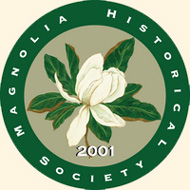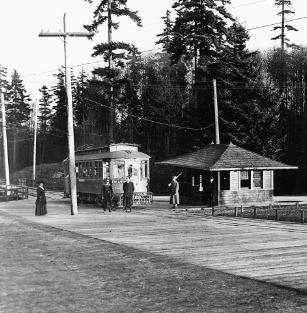By Jeffrey Cunningham
President of the Magnolia Historical Society
November 11th, 2014
Then: Today, there are only three ways to enter Magnolia by car, one by train and countless ways by sea. Geographically the area that lies between Magnolia Bluff and Queen Anne Hill, now known as Interbay, was a tide flat region industrialized and settled during the early part of the twentieth century. The two current vehicle entrances serving the northern part of Magnolia require lower bridges that cross rail yards. The southern route has long had a larger raised bridge to shuttle traffic in and out from the closest point to downtown. The current bridge, spanning Smith Cove, named Magnolia Bridge was formerly known as the Garfield Street Bridge. It has been in place for more than 80 years, but it was not the first bridge to service Magnolia’s southern end. During Magnolia’s early days the bridges that connected the neighborhood with the rest of the city went through various iterations.
Hal Will discusses some of the early bridges in his essay entitled “Magnolia’s Wooden Trestles” in Magnolia: Memories and Milestones. He talks about an environment in which “Seattle’s shorelines were laced with trestles.” Timber was abundant and there was much development taking place. The first one was built on Grand Boulevard in first decade of the twentieth century. This was not “The Boulevard” which is well known to all Magnolians, but this was the old name for Dravus Street. Around the year 1912 the first Garfield Street wooden trestle was built. It was in roughly the same spot that the modern bridge is, with one huge difference: it did not meet where it does today at the southwest tip of the bluff, but at 23rd Street and Newton Street; the grade was a lot less steep than it is today. A little north of the Garfield Street trestle, there was also the Wheeler Street trestle, present in pictures from 1914. This bridge extended from 15th Avenue to Thorndyke Street. It was crossed by a diagonal trestle running along Lawton Street. Imagine having two bridges serving the south side of Magnolia! That was a reality 100 years ago; it would certainly help relieve tension with the present traffic foible of the Fisherman’s Terminal overpass upgrade. There was also the little documented South Shore trestle that seems that have connected 32nd Avenue in Magnolia to the tidelands, then snaked around the shore by Smith Cove to link up with other trestles.
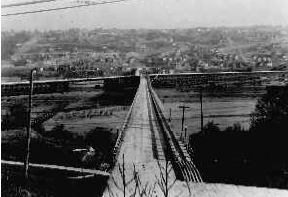
This 1929 photo shows the 23rd Avenue West Trestle from the left (north) and the Garfield Street Trestle from the right (east) meeting at mid-point. This route to Magnolia was about to end when the concrete Garfield Street Bridge replaced the wooden trestle during the next seven months. Seattle Municipal Archives #29360.
In Hal Will’s essay he states that the Wheeler Street trestle burned down on June 30, 1924. It was reported in the Seattle Times that the replacement would cost the city $250,000. According to Aleua Frare’s Magnolia: Yesterday and Today this was caused by a spark from a passing train. Many ideas for replacement were proposed, even one that included a tunnel from Smith Cove to 30th Street in central Magnolia. Joy Carpine, in her essay “Critical Connection: Bridge to the Bluff” in Magnolia: Memories and Milestones, reports that very shortly after the Wheeler Street Bridge burned concerned Magnolians from both the Magnolia Improvement Club and the Carleton Park Improvement Club (now known as the Magnolia Community Club) sent letters into the city lobbying for a more permanent solution. Although these bridges had only been in place for a few decades, it was clear that there were signs of decay. In October 1925 a steel and concrete bridge was proposed. A few years of planning and discussion of the shared cost between the railroad companies, the city, the Port of Seattle and private citizens ensued. Construction began on August 1929 and the Garfield Street Bridge was completed on December 22nd 1930; the total cost of construction was $774,907. This was a major contributing factor to the Village gaining prominence as the center of commerce in Magnolia. In Gary McDaniel’s essay “Fill ‘Er Up” in Magnolia: Making More Memories, he states that center of gravity shifted from the northern area of Fort Lawton down to McGraw Street: “the opening of the bridge caused the main flow of traffic through Magnolia to reverse itself; now it entered the southeast instead of the northeast.” In 1960 the Magnolia Community Club petitioned the city to officially change the name to the Magnolia Bridge and some repairs and improvements were made.
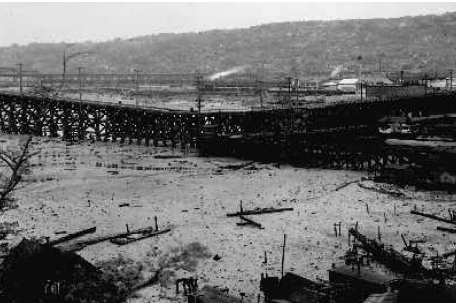
The Wheeler Street Trestle viewed from Thorndyke Avenue West at 23rd Avenue West on Magnolia looking east toward Queen Anne Hill. The intersecting trestle across mid picture is the Lawton Way Trestle. Courtesy of Neil Smith. Museum of History and Industry #1999.67.7.
Aside from that little happened to the bridge until 1997, when bad landslides on both sides of the bridge caused closures and delays. In Carpine’s essay there is discussion of Colonel David O’Denius’ and his wife Nancy’s plight when they nearly lost everything when their house at the base of the bluff near Smith Cove was completely destroyed by the landslide of 1997. Fortunately they were not home at the time and their dog, appropriately named Lucky, was rescued by police. This and other landslides as well as the Nisqually Quake of 2001 did considerable damage to the bridge. I am sure many Magnolians remember the traffic nightmare that ensued in the late 1990’s and early 2000’s when these events rendered the Magnolia Bridge unsafe and unusable. The Nisqually Quake closed the bridge for nearly half a year, funneling traffic to Dravus and Fisherman’s Terminal. The biotech corporation Immunex purchased land in Smith Cove with the promises of jobs and an overpass was built on Elliot Street near the base of the Magnolia Bridge. During the acquisition of the property in 2001, Immunex was purchased by a larger corporation and the boon to the economy failed to materialize.
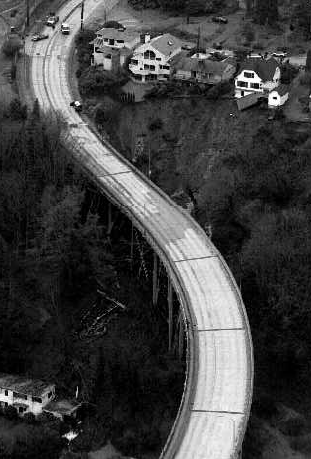
The January 1997 mudslide swept down the hill between two of the bridge’s support columns, knocking out cross braces and filling the navy home below the bridge with debris. Courtesy of The Seattle Times.
Now: The last ten years have not been kind to the Magnolia Bridge. A quick Google search paints an unsettling picture of the precarious state that the Magnolia Bridge is languishing in. Articles with titles such as “Though Crumbling, No Replacement in Sight for Magnolia Bridge,” from kirotv.com on February 27, 2013, and “One Year Later: Is the Magnolia Bridge Still Safe?” posted on January 29, 2014 by komonews.com, demonstrate that action certainly needs to be taken to fix the current problems. According to the Kiro article, a net was installed at an undisclosed time in case of chunks of falling concrete. King County’s website states that: “Although the bridge is currently safe for motorists to use, it is vulnerable to severe damage in another seismic event. Continued deterioration has weakened the structure.” Komo reported that the bridge is inspected twice a year and patch jobs are done routinely. The bridge is currently on SDOT’s priority list for replacement, but budget woes have hindered this development.
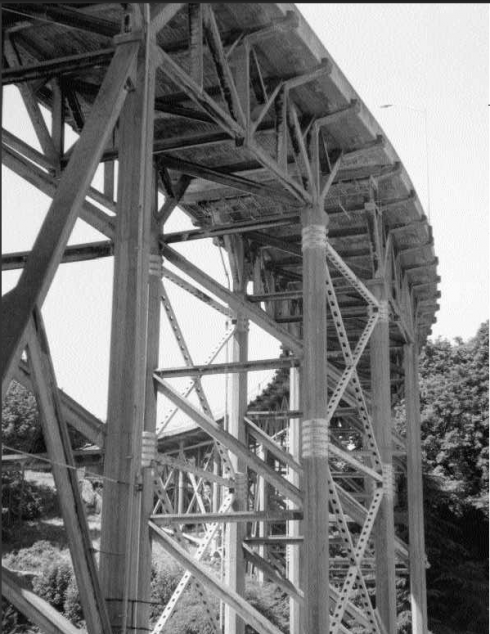
The west end of the Magnolia Bridge showing the steel bracings added over the years. Photo by Monica Wooton, 2000

